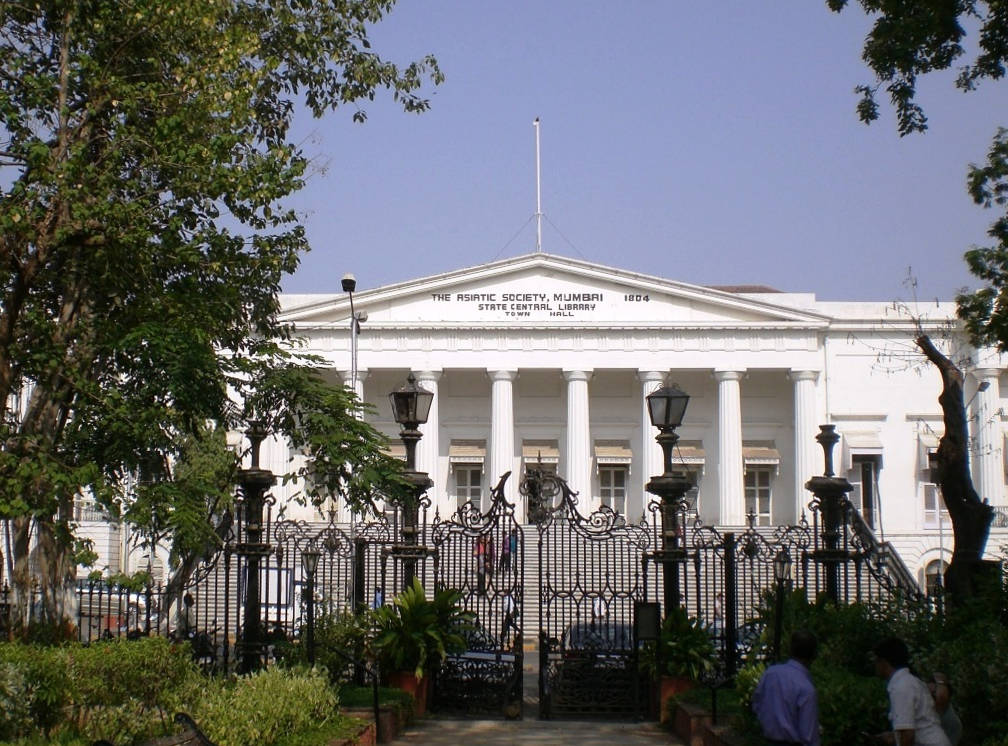
Bombay Town Hall from Elphinstone Gardens. Photograph by the author. Click on images to enlarge them.
Bombay Town Hall is in the words of Jan Morris, “the masterpiece of an otherwise unknown officer of the Bombay Engineers, Colonel Thomas Cowper, finished in 1833 in the neo-classical style, purer than the Palladian which was then fashionable in England “ (p.109). Philip Davies agrees: “It is the finest neo-classical building in India with several unique adaptations to the climate (p.100). Sir John Malcolm, the then Governor of Bombay praised the palatial structure, enthusiastically pointing out that "it is the most magnificent structure that taste and munificence combined have as yet erected in India." Nowadays it is home to the Asiatic Society of Mumbai and in 2016 is undergoing much needed and extensive refurbishment.
Building, which started in 1820, took more than 13 years. It cost over £60,000 most of which was met by the East India Company and the remainder by private subscription and a lottery. The intention was to house not just civic offices for the Legislative Council but also a library and museum for the Asiatic Society. The Doric columns were made in England and carried out in an East Indiaman (armed merchant ship) as freight (Davies p. 100).
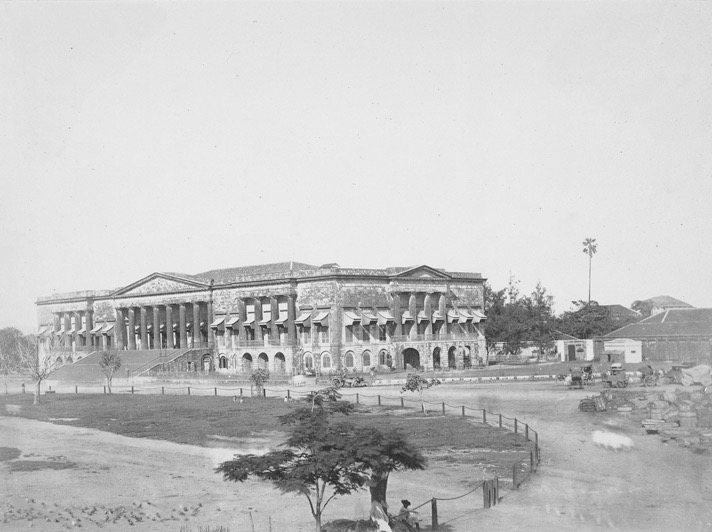
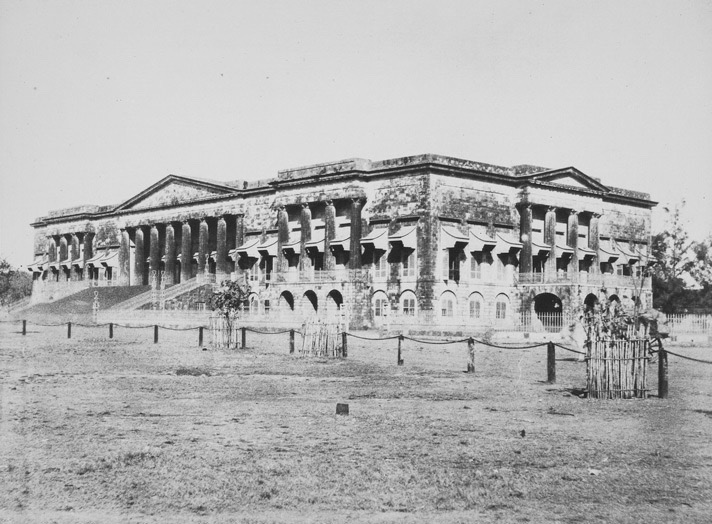
Left: Bombay Town Hall. c. 1855. From the Vibart collection. Right: Bombay Town Hall. Charles Scott. 1850. Both Copyright of the British Library.
So what do we know about the main architect behind this formidable task? He was born Thomas Alexander Cowper on 28th December 1781 in London. He became an East India Company cadet in 1796 aged 15 and then travelled out to India. After 20 years’ service, when he earned his furlough in England, he sailed from Bombay in the Sir William Pulteney in February 1816. A widower when he married Charlotte Maitland in Cheltenham on 27th March 1819, he already had a daughter Cora by his previous marriage. In January of the following year their eldest son, also Thomas Alexander, was born in England, and in February Charlotte travelled out to India aboard the Marquis of Huntley (Captain D. Macleod) arriving Bombay in June. There she had two more sons and three daughters before her husband died aged 45 at Bombay on 28th July 1825 while serving as Chief Engineer with the rank of Lieutenant-Colonel. On 15th November his widow and 4 surviving children set sail on the James Sibbald (Captain J K Forbes) from Bombay back to Britain.

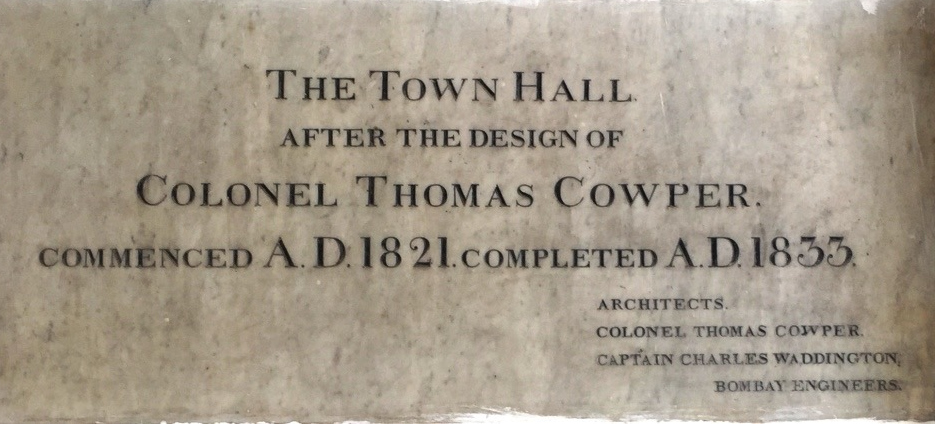
Left: Postcard of Bombay Town Hall. Collection of the author. Right: Inscription crediting Cowper as architect. Photograph by the author.
These scant details do not describe the range of skills and activities of the Corps of Bombay Engineers, a military unit under the Bombay Presidency army that also fulfilled a number of civil engineering roles. If we look at the East India Register for 1825, the year of Cowper’s death, we can see that there were only 27 officers. A few of the more senior ones were based in Bombay where their responsibilities included military and public works projects and supervising the mint. Many of the junior and middle ranking officers were posted elsewhere in the Bombay Presidency (which reached from modern Pakistan to the western tip of south India); one officer each was in North Gujerat, South Gujerat, Poonah (modern Pune), Travancore, Baroda, Mhow (Dr Ambedkar Nagar), Candeish, Cutch and Katywar (now close to the Pakistan border), South Concan (now the Koncan coast both north and south of Goa) etc. At any one time about a quarter of the officers would be on sick leave in India or on furlough back in Britain; a period of about three years allowing several months for the sea journeys. Others would be on survey duty and some posted with the army when on operations.
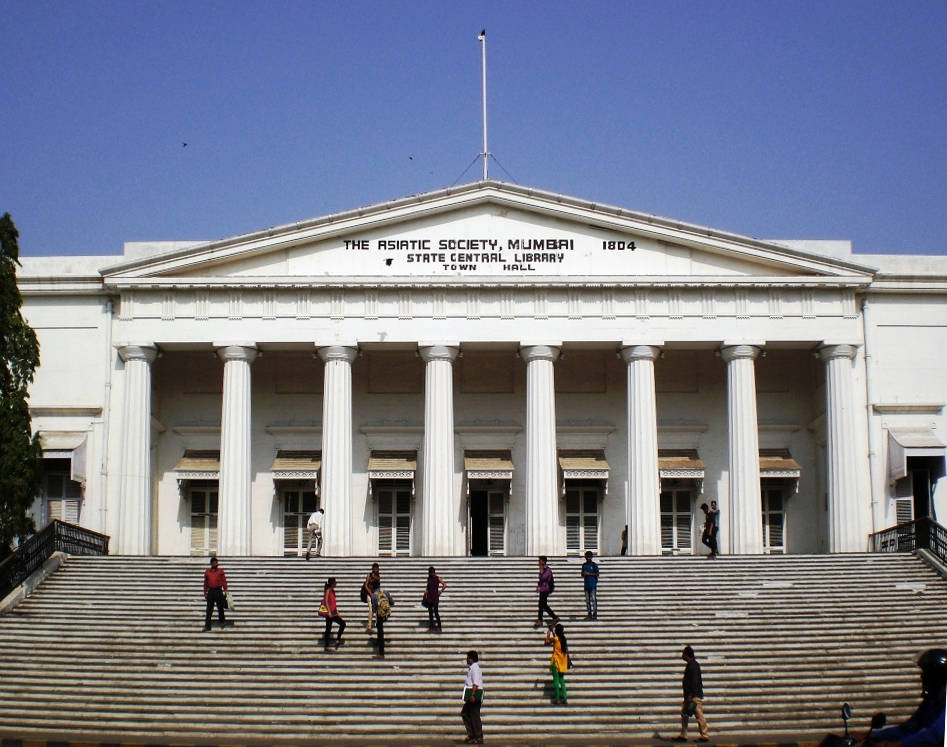
Bombay Town Hal. Photograph by the author.
We know rather more about Thomas’s elder brother, William, who also reached the rank of Lt-Colonel in the Bombay Engineers before he died in London in May 1825. When he first arrived in India he was deployed with the army as Chief Engineer during the campaign that included the Battle of Bhurtpore in 1805. He became famous for building the docks in Bombay that enabled the Royal Navy to build warships made of Indian teak at a time when the oak forests of Britain were running short of timber during the Napoleonic Wars. Unsurprisingly, perhaps, he received a glowing obituary in all the main journals of the day including the Oriental Herald, the Asiatic Journal and the East India Military Calendar.
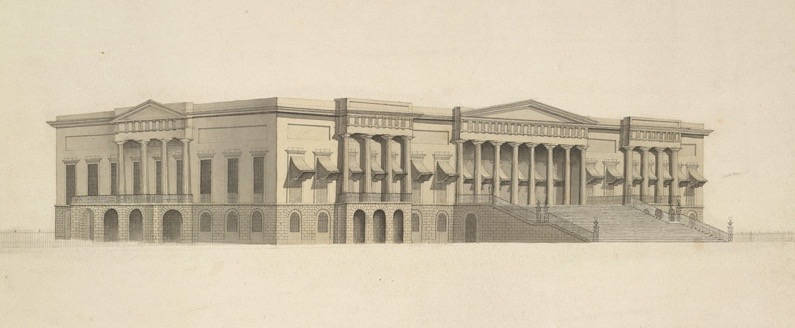
Drawing of the future Bombay Town Hall 1825 by unknown artist. Copyright of the British Library.
By contrast Thomas Cowper’s death was barely reported. He leaves no known gravestone, memorial plaque or tomb in Bombay, perhaps due to the sudden prospects of poverty which would have faced his widow and four remaining children. Tombstones are expensive, but it is surprising that the Corps of Engineers did not commission one. Fortunately the family survived with the help of a pension awarded by the government, and his eldest son also pursued a distinguished career in the Bombay army. As for the Town Hall project, a Captain L.J Frederick served as the Presidency’s Superintending Engineer for two years before going home on furlough.
His place was taken by another young Captain. Charles Waddington, who was born in London on 24nd October 1796, was educated at the East India Company’s Addiscombe College. Arriving in India on 22nd May 1814, he was promoted to captain on 29th July 1825 (the day after Cowper was buried), and appointed in October as executive engineer at Baroda. In November 1827 he was moved to Bombay as civil engineer for the Bombay Presidency, and in August 1828 he became Superintending Engineer. During this period (1827-1833) he completed Cowper’s work on the Town Hall. Later in his career he took part in expeditions led by General Napier to Baluchistan and Sind where he saw action at the battles of Meanee and Hyderabad. He eventually retired from India as a Major-General and died in 1858. Somebody has posted a very good biography of him on Wikipedia, although it does not mention his considerable achievement in completing Cowper’s work on Bombay Town Hall.
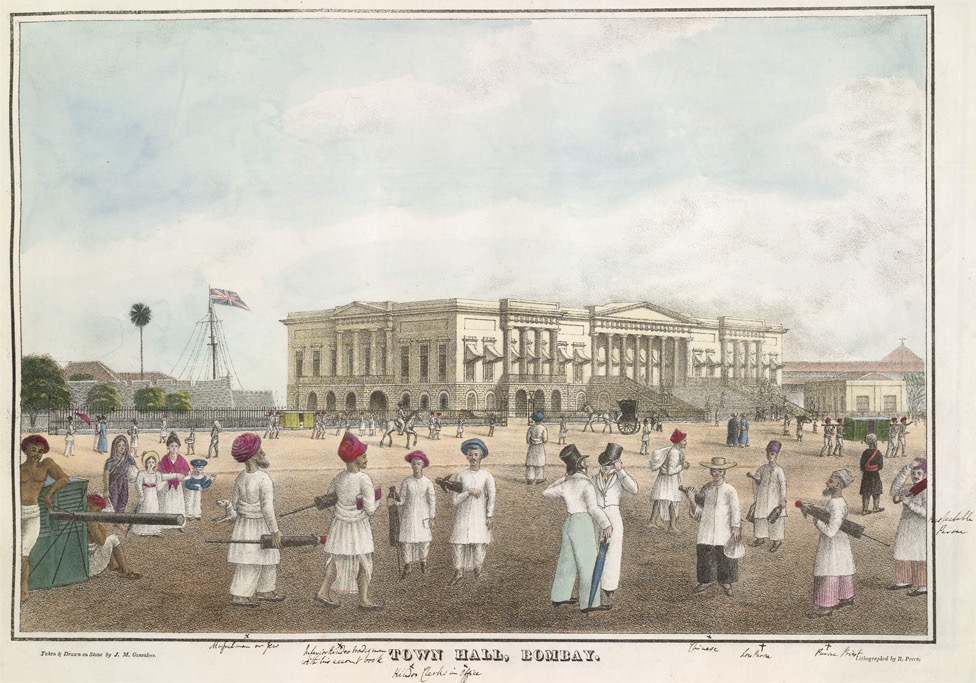
Bombay Town Hall. 1833. by J M Goncalves. Copyright of the British Library.
Usha Thakkar points out the that a number of important events in the history of India took place at this beautiful neoclassical building:
The Town Hall is a witness of historic events. The first exhibition of electric light was in the Town Hall in 1847. It was on the spacious verandah that Lord Elphinstone, Governor of Bombay, stood on 1st November 1858 as he read the Queen’s proclamation transferring the East India Company to the British Crown. When the urn containing a portion of Mahatma Ghandi’s ashes was kept in the Town Hall in February 1948, the grieving city paid its last homage to the beloved leader and the place turned into a place of pilgrimage. [p.34]
In the 1860s the area around the Town Hall was redeveloped, and Elphinstone Circle (now Horniman Circle) was built to link the Town Hall to St Thomas’s Cathedral, providing modern Mumbai with one of its most grandiose and stylish districts. The pleasing end to this story is that the Town Hall now houses both the Maharashtra State Library and the Asiatic Society. This popular site for Mumbaikers and Bombayites is a fitting memorial to Thomas Cowper.
Further reading.
Asiatic Journal for 1819, 1820, 1825 and 1832.
Buckland, C E. Dictionary of Indian Biography. London: 1906. P.437.
“Charles Waddington. East India Company Officer.” Wikipedia. Web. 17 October 2016.
Davies, Philip. Splendours of the Raj. London: John Murray, 1985.
Douglas, James. Glimpses of old Bombay. London: Sampson Low, 1900.
Dwivedi, Sharada, and Mehrotra, Rahul. Bombay. The Cities within. Bombay: India Book House, 1995.
FIBIS. Families in British India Society website.
Ganesh, Kamala (editor). Zero Point Bombay. New Delhi: Lotus, 2008.
India Office. Family History Search. British Library online search tool.
Morris, Jan, and Simon Winchester. Stones of Empire. Oxford: OUP, 1983.
“Papers regarding the construction of the Bombay Town Hall - pension awarded to the family of Lieut Colonel Thomas Alexander Cowper the late Engineer in Charge - measures taken to preserve the statue of Marquis Cornwallis - payment of 2000 rupees to a native draughtsman employed by Colonel Cowper.” Nov 1805-Jun 1827. British Library: Asian and African Studies, not available at The National Archives.
“Services of the late Colonel Cowper of the Bombay army.” Oriental Herald and Colonial review. Vol VI. London; Sandford Arnot, 1825.
Thakkar, Usha. “Echoes of many voices. The Town Hall.” in Zero Point Bombay.
Last modified 16 October 2016